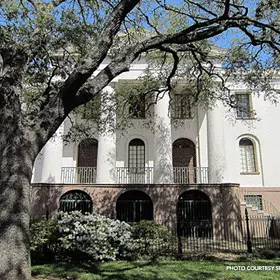Outside The Box: The Monumental Task of Restoring Baltimore's Washington Monument

photo by: Mount Vernon Place Conservancy
Mention the Washington Monument and most people think of Robert Mills’ marble obelisk on the National Mall. But another Washington Monument is stealing some of the limelight this year, thanks to a milestone anniversary and a recent restoration.
The Washington Monument in Baltimore, also designed by Robert Mills, is considered the first monument to the nation’s first president. Construction started in 1815 and was largely completed in 1829, making it several decades older than the D.C. monument. Baltimore’s version reopened after a $5.5 million restoration on July 4, 2015, exactly 200 years after the cornerstone was laid.
The restoration was the first major project completed by the Mount Vernon Place Conservancy, a nonprofit group that formed in 2008. The conservancy embarked on a double-pronged effort to bring the 19th-century landmark into the 21st century. One objective was to improve the structure’s physical condition. At the same time, the conservancy took steps to make people aware of the monument through social media and other means, giving it a Facebook page, YouTube videos, and a website.
“It’s somewhat hard to believe that, given how important this monument is, it had no online presence,” says art and architectural historian Lance Humphries, who leads the conservancy’s restoration committee. “This was a major accomplishment for the city. Washington, D.C., couldn’t pull it off. They started in 1848 and finished in 1885. We finished in 1829. It was a symbol of pride.”
Baltimore’s 178-foot-tall monument is a classical Doric column atop a stone base, with a statue at the top by Italian sculptor Enrico Causici. Visitors can climb 227 steps to enjoy unobstructed views.
The monument closed in 2010 after an engineering survey revealed potential structural flaws. Repair work included washing the stones with a nonabrasive detergent and resetting parapet walls; replacing exposed iron pins with stainless steel pins where possible; repointing every mortar joint; re-stuccoing the gallery inside the base; and rebuilding the four stone entrances to the gallery level.
Along with preserving the monument, the conservancy’s directors brought it into the present with new lighting and mechanical systems. In the restored gallery, they installed touch-screen stations and a video -kiosk where visitors can get information about the monument and the conservancy’s vision for Mount Vernon Place. (You can visit the base-level gallery for free, but there’s a $5 per person charge to climb to the top.)
Now that the restoration is complete, Humphries hopes people will come and see it for themselves—and remember which city constructed the first monument to George Washington. “We’re building awareness,” he says. “I hope that what we’ve done is going to help inch this back up to the -national recognition it really deserves.”
Online Extra: More Monumental Structures by Robert Mills

We explore four buildings designed by one of America's first native-born architects, Robert Mills.


.webp)